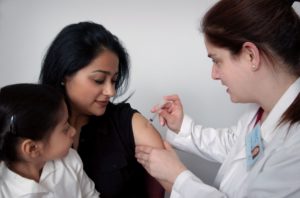Cervical Cancer Awareness Month: A Disease of Inequity
As mentioned in a blog post earlier this month, 300,000 women pass away each year globally from cervical cancer. And while we have the technical and medical tools necessary to eliminate the disease, cervical cancer ranks fourth among the most common forms of cancer for women in the world. It truly is a disease of inequity; in 2018, nearly 80% of those deaths took place in low-and middle-income countries. Sadly, the continuation of cervical cancer shows just how much inequality there is in terms of women’s healthcare. Yet, the underlying issue continues to be the lack of resources and access to affordable care in underdeveloped countries.
When trying to understand the disparity in care between developed- and under-developed countries, social inequalities such as poverty, geography, and education play a large role. In many low-income countries, there is either limited access to private hospitals that have the necessary equipment, or public clinics simply do not have the equipment. And, even in higher-income countries around the world, women living in low-income situations or rural areas struggle to find the proper care they need.
Due to the work of The World Health Organization (WHO), in 2019 a global strategy was put in place to provide necessary resources to under-served countries, with the goal to eliminate cervical cancer worldwide by 2030.
WHO’s Global Call to Action
In May of 2018, Dr. Tedros Adhanom Ghebreyesus, Director-General of the WHO, announced a global call-to-action towards eliminating cervical cancer as a public health problem around the world. By January 2019, working closely with many member states, UN agencies, and other partners, a global strategy was unveiled, outlining key goals and targets to end the disease. In this strategy, Dr. Ghebreyesus proposed that to eliminate cervical cancer, all countries must reach and maintain a threshold of at least four cases per 100,000 women.
To reach this goal, Dr. Ghebreyesus stated that there are three key “pillars” that must be met: vaccination, screening, and treatment. For vaccination to be deemed a success by 2030, 90% or more of girls need to be fully vaccinated with the HPV vaccine by age 15. Furthermore, at least 70% of women must be screened with a high-performance test by age 35, with another test administered by age 45. Lastly, it is important that 90% of women identified with cervical cancer receive treatment (to be clear, that is 90% of women identified with pre-cancer treated, as well as 90% of women with invasive cancer).
Closing the Inequity Gap
Despite all of the work done by the WHO, there is still much that needs to be done to truly prevent cervical cancer around the world. Providing HPV vaccinations to girls before age 15, and continual screening and treatment for woman between 35-45 is just the tip of the iceberg. And, while cervical cancer rates have fallen in most developed-countries around the world, infection rates in under-developed countries have either risen, or remain the same.
Cervical cancer awareness doesn’t stop after January. It is imperative that we continue to safeguard the wellbeing of women, especially those in low- and middle-income countries. It is not uncommon that cervical cancer takes the lives of women in the prime of their existence. To truly close the inequality gap, we must continue to fight for women’s healthcare rights and provide necessary treatment to those in need. To schedule a screening or physical with your primary care provider, visit the patient portal, or call our office.

